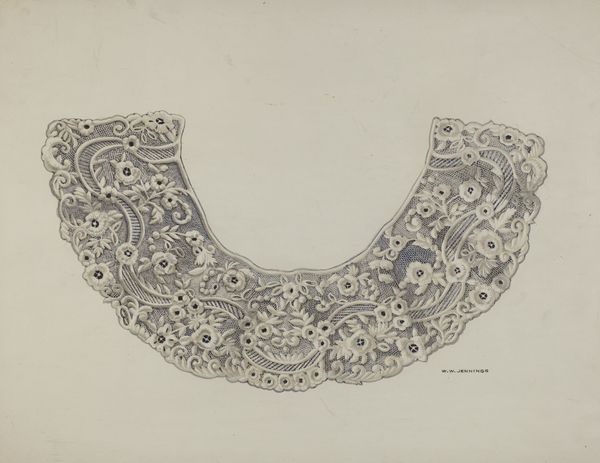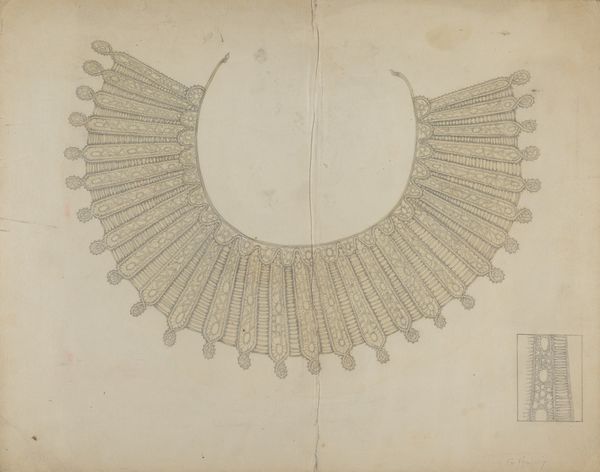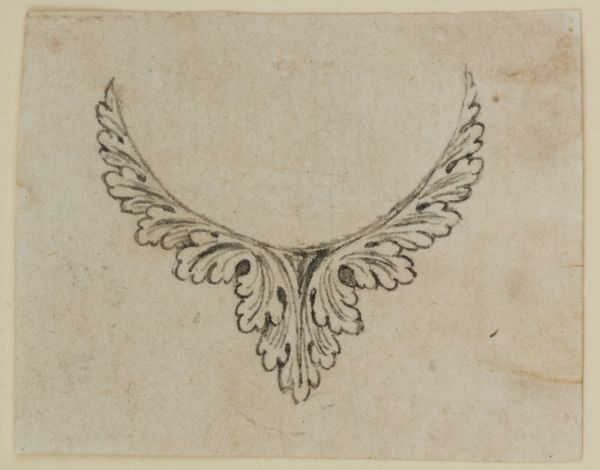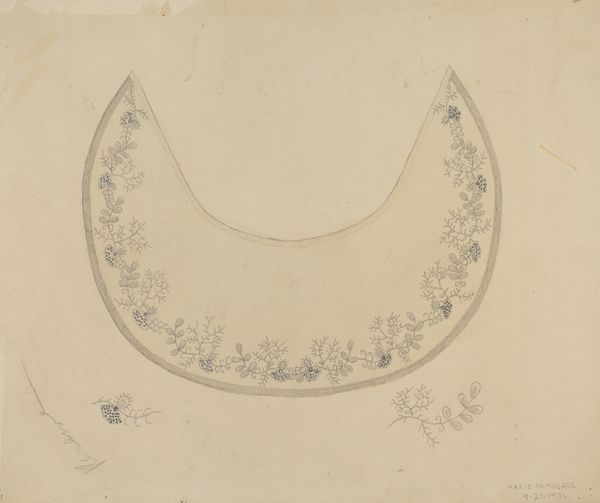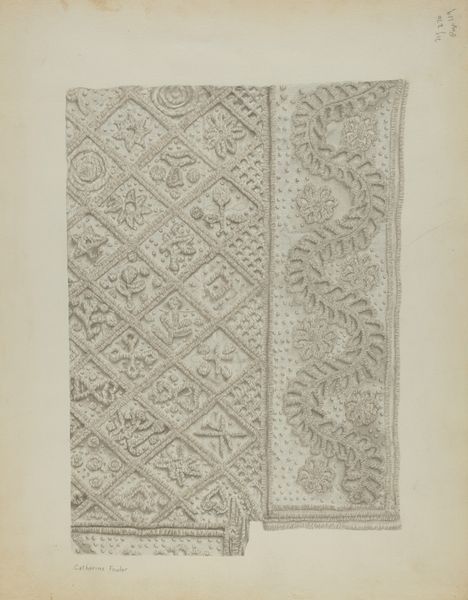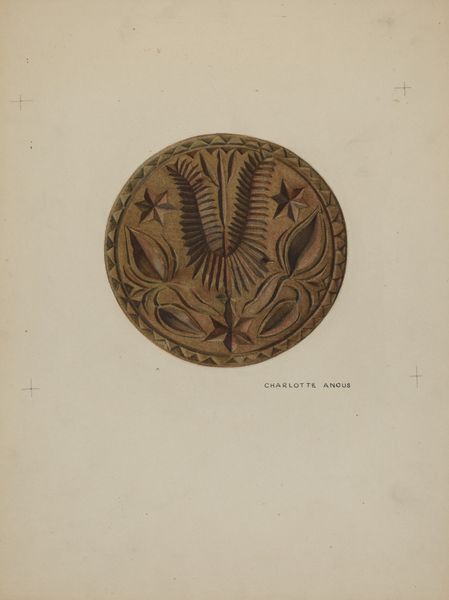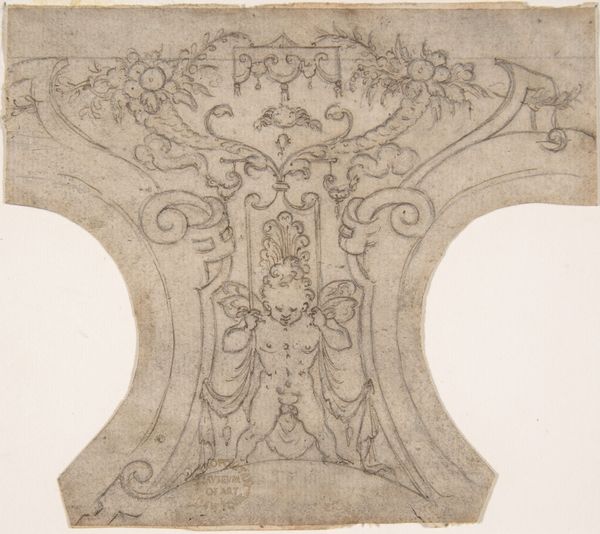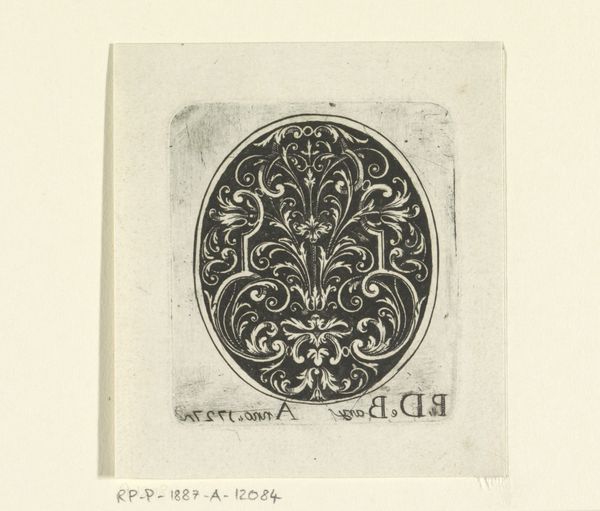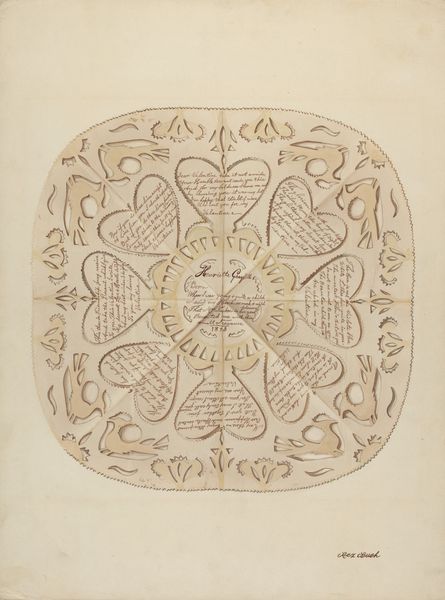
drawing, paper, pencil
#
drawing
#
paper
#
pencil drawing
#
pencil
#
academic-art
#
decorative-art
Dimensions: overall: 35.6 x 31.8 cm (14 x 12 1/2 in.) Original IAD Object: 5" wide
Copyright: National Gallery of Art: CC0 1.0
Editor: Here we have "Embroidered Lace Collar," a pencil drawing on paper by Thomas O'Connor, created sometime between 1935 and 1942. It’s quite delicate; the fine details of the lace really stand out. How do you interpret this work? Curator: Well, the image of this collar speaks to the domestic sphere and to a particular history of women's labor. Think about the socio-economic conditions of the 1930s and 40s. Why document this kind of handcraft so meticulously? Editor: Perhaps there was a concern about preserving these traditional skills as industrialization increased? Curator: Precisely! And who was likely to own such a collar? Consider the social and class implications of handmade lace versus mass-produced textiles at the time. It might reflect an attempt to preserve traditions viewed as markers of refinement. The role of institutions should not be overlooked: it invites us to question which types of labour are represented, or not, and why. What are your thoughts on that? Editor: That makes me consider what’s not in the drawing – the wearer, the social context of wearing it. It brings a sharp contrast between fine art and craft and begs the question: who gets remembered? Curator: Exactly. It makes us consider how museums create and shape the narrative about society and individual in it. Editor: I've never considered it that way before. I was focusing on its aesthetic qualities, but it has so much historical context! Thanks.
Comments
No comments
Be the first to comment and join the conversation on the ultimate creative platform.
